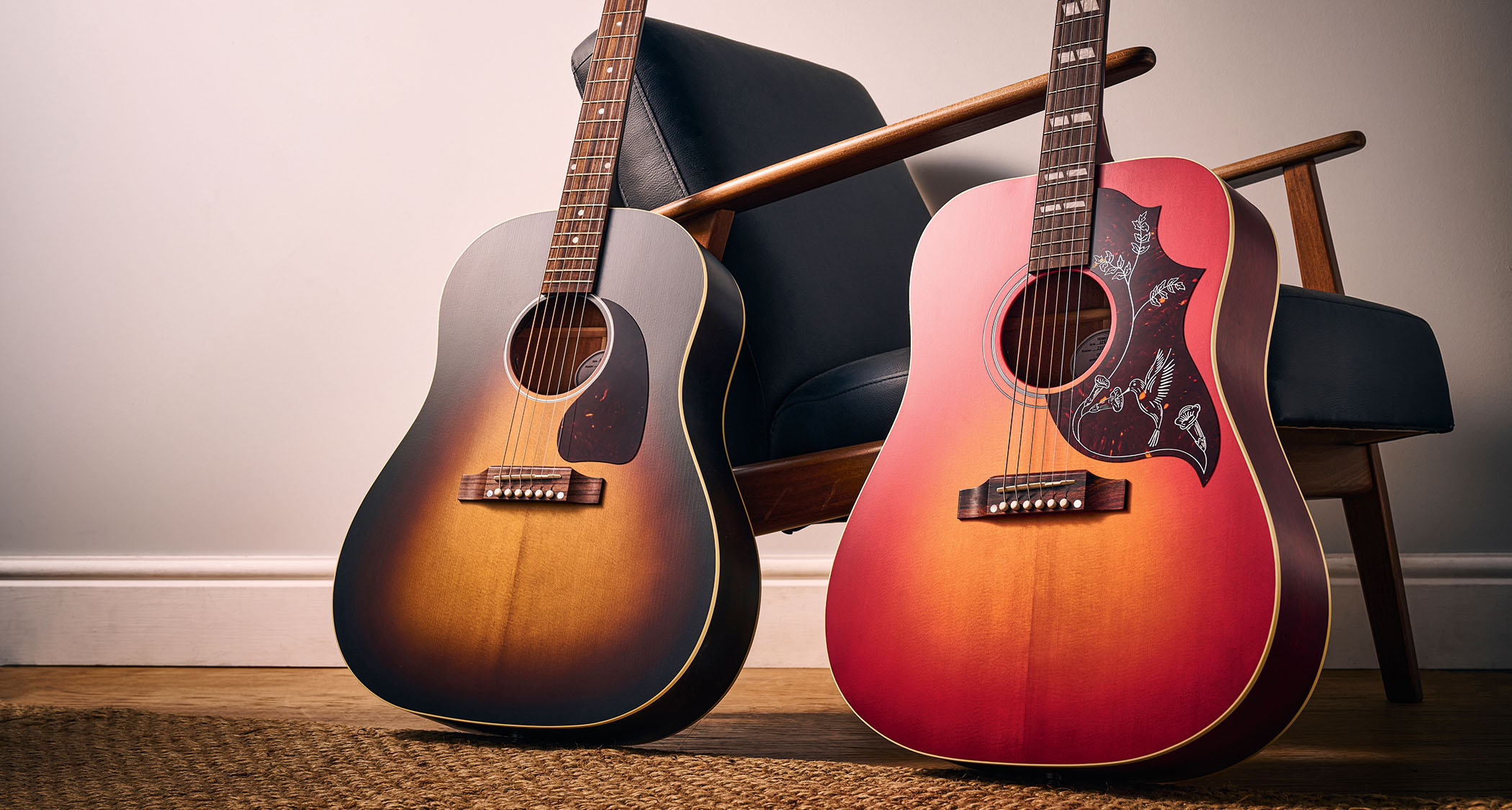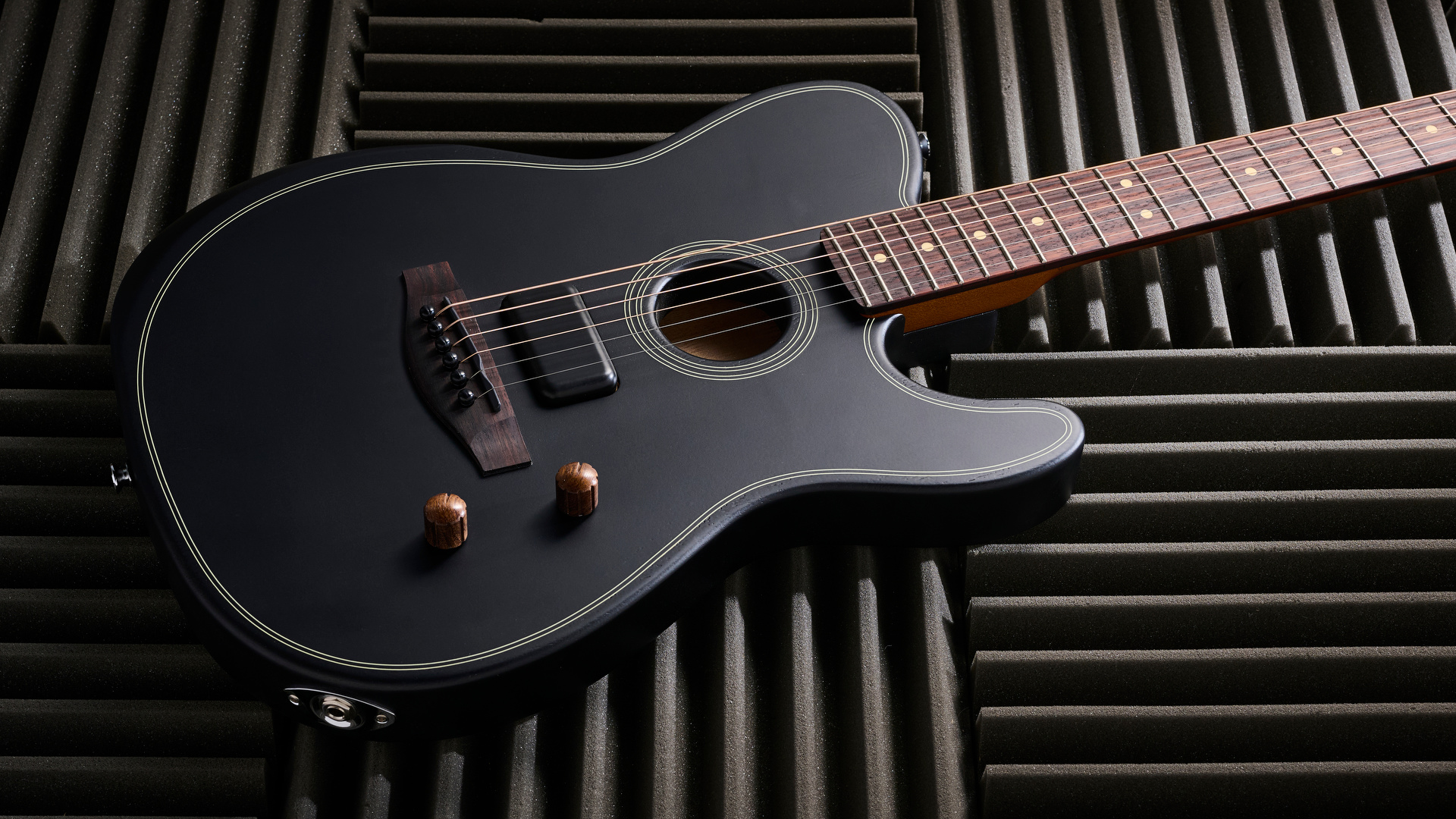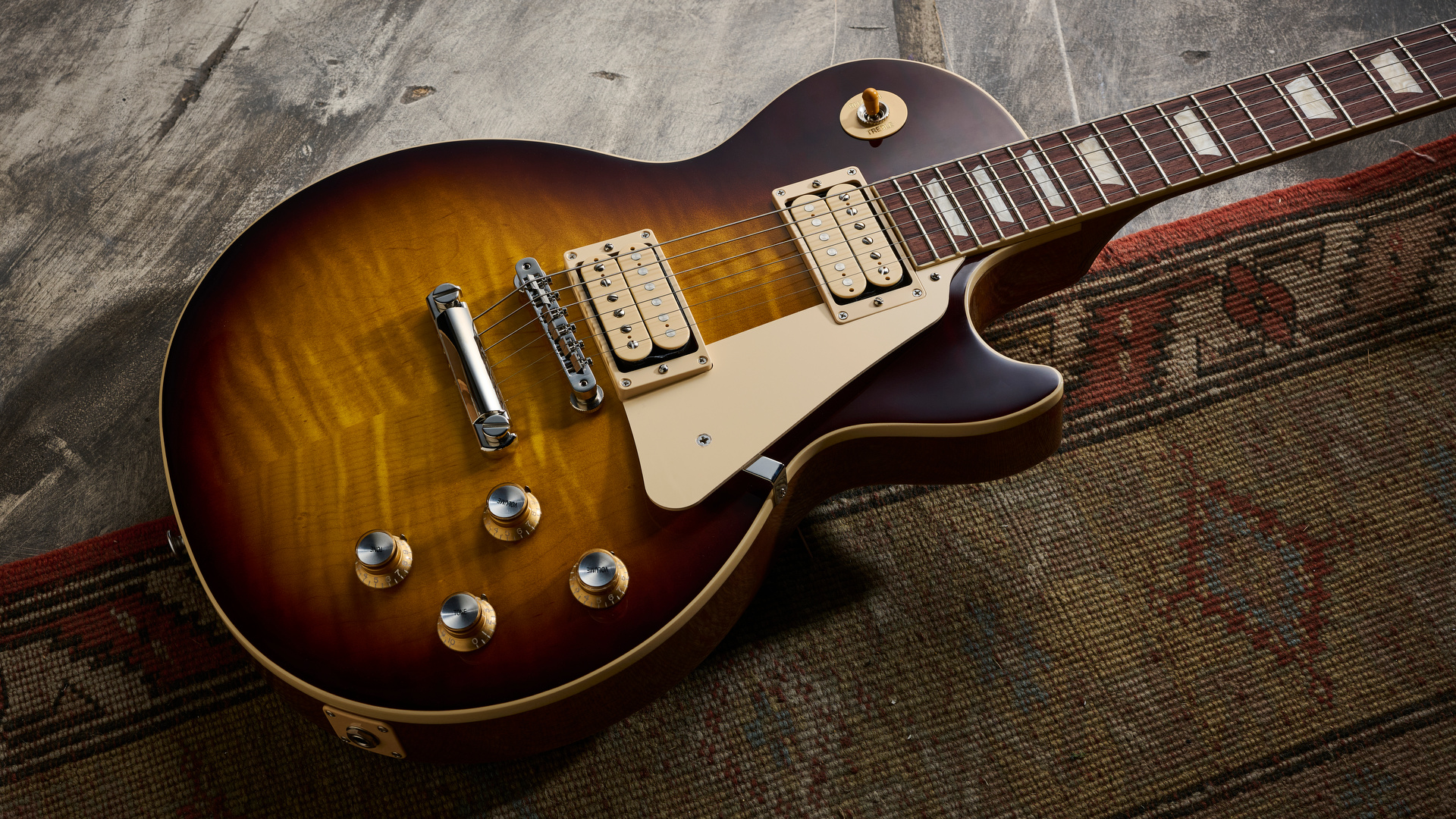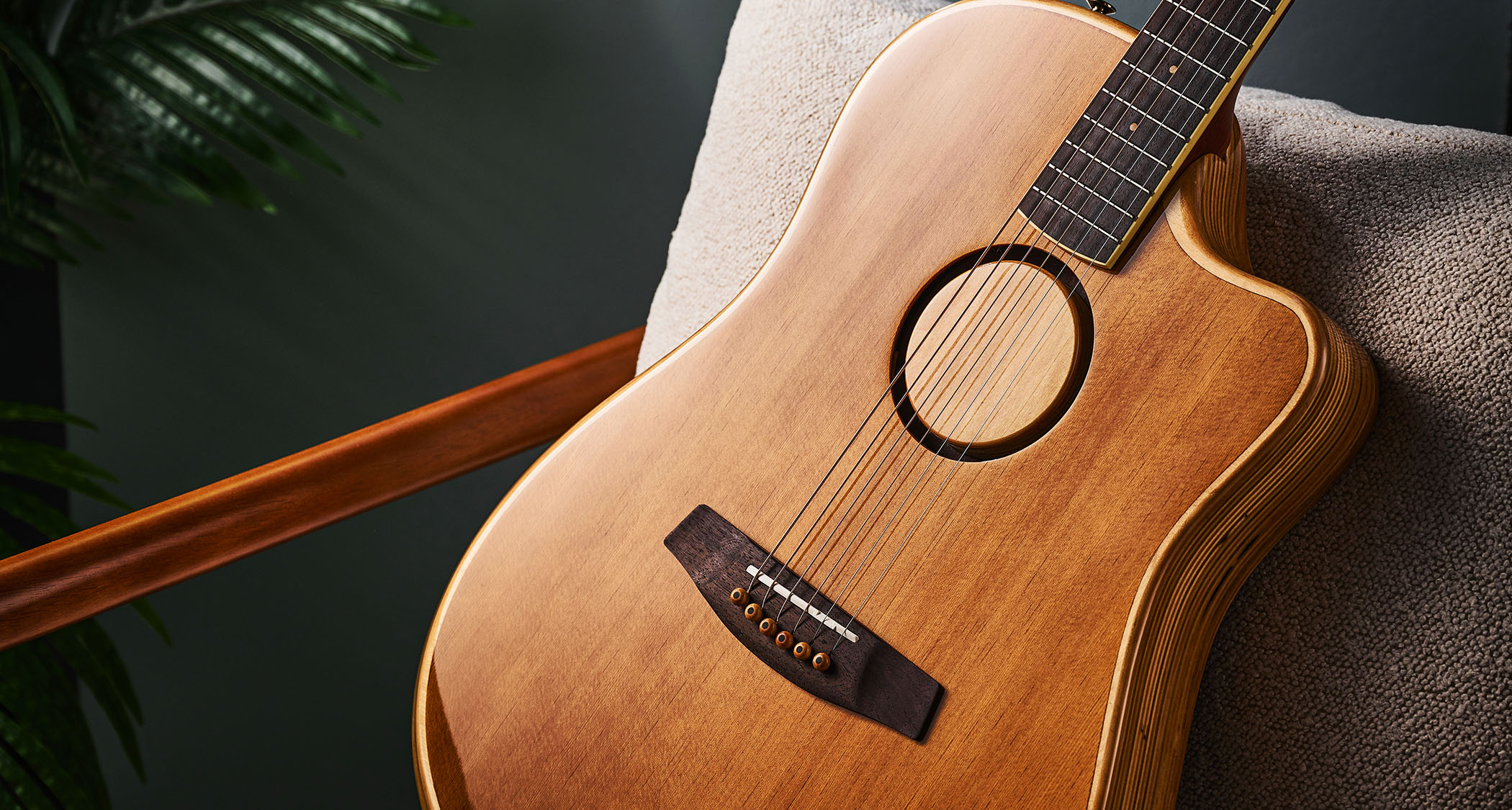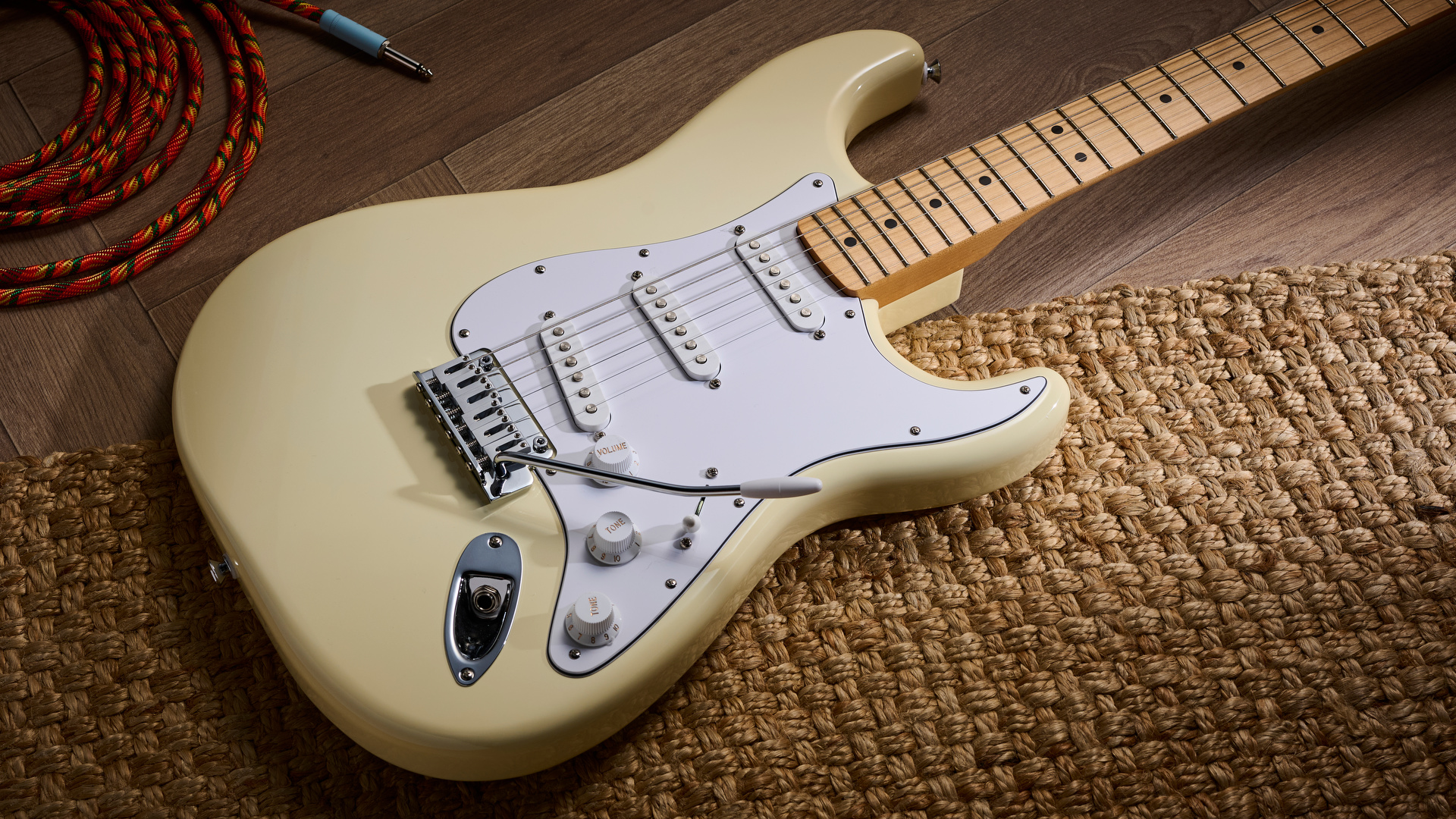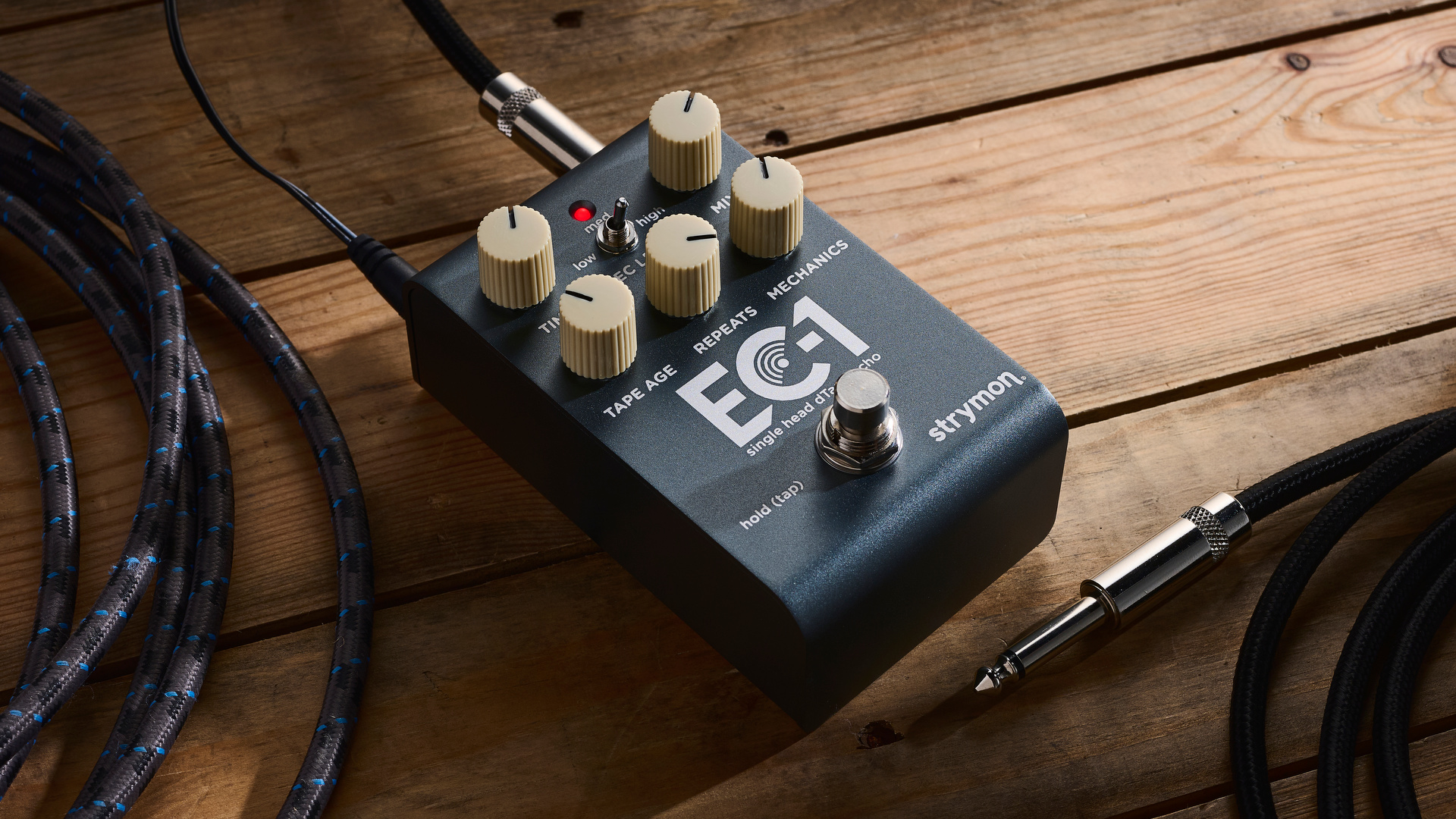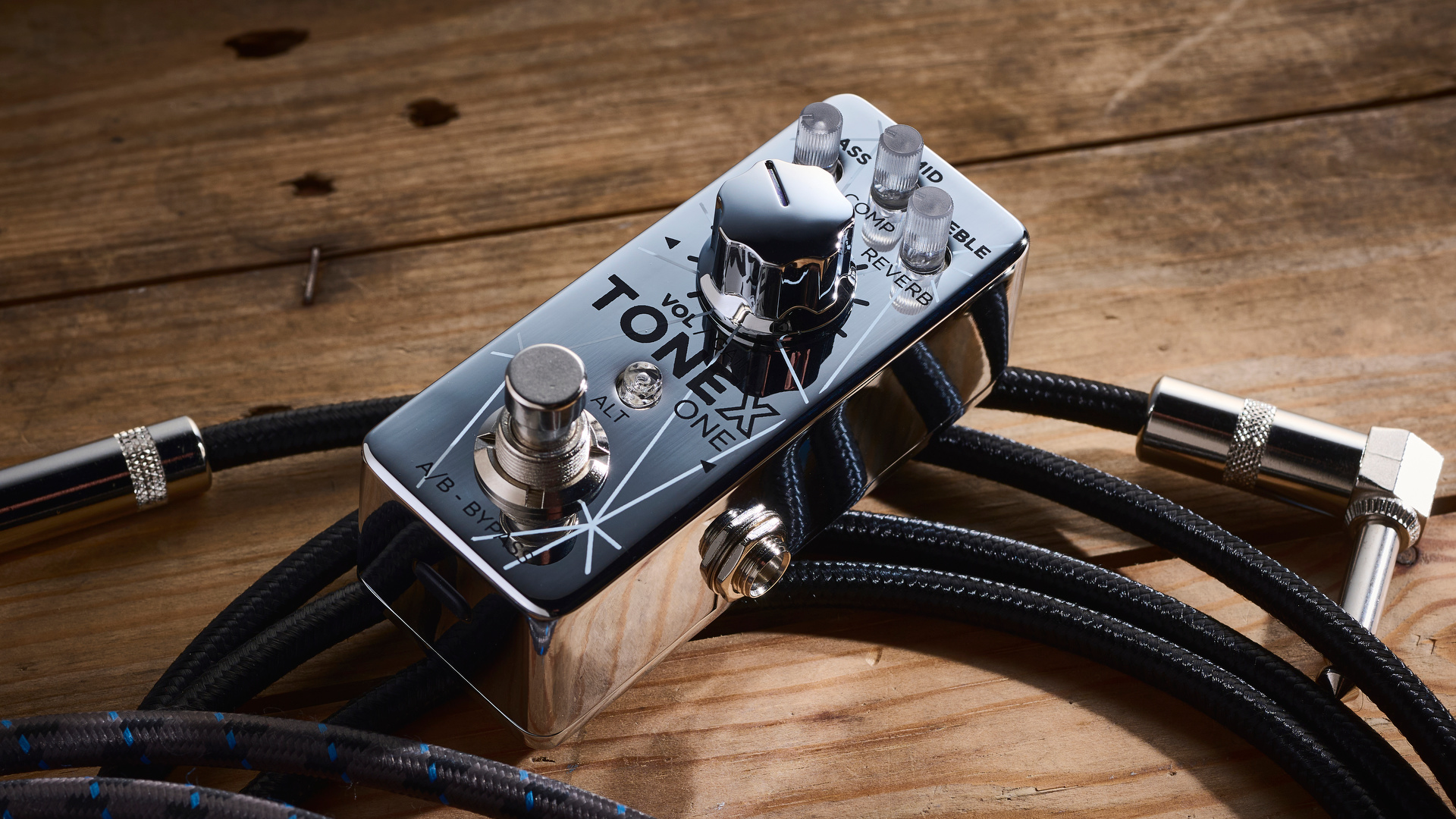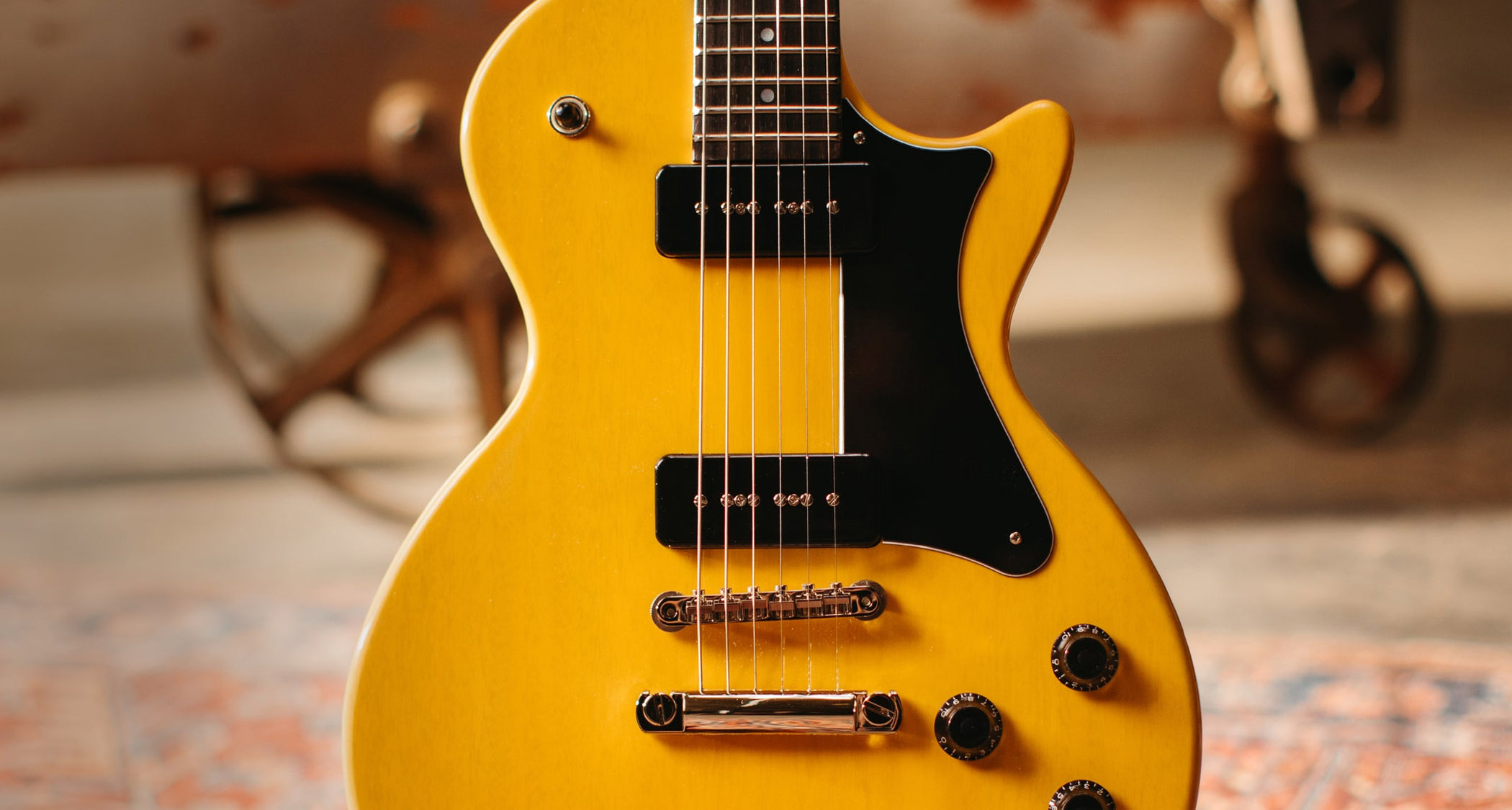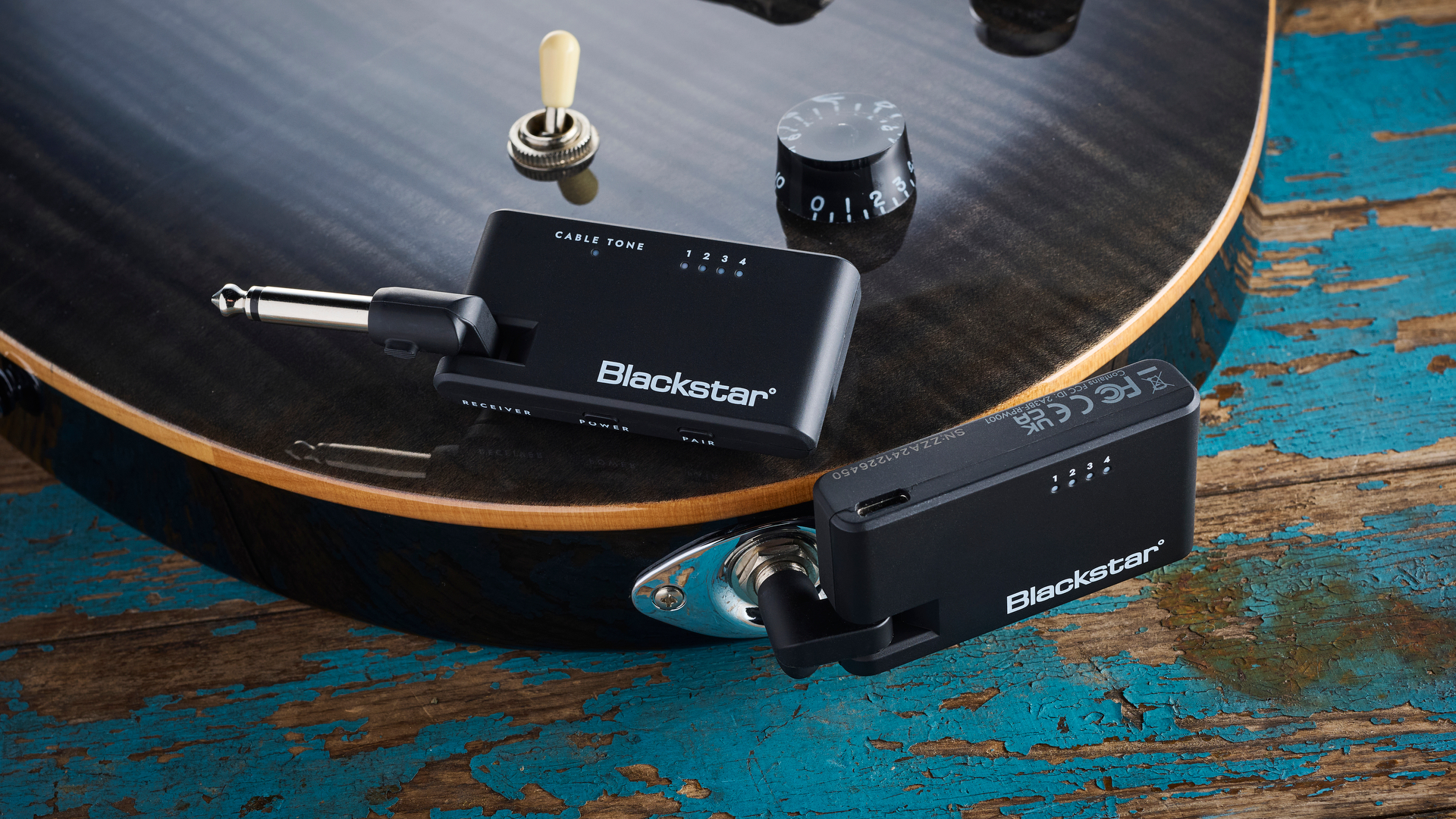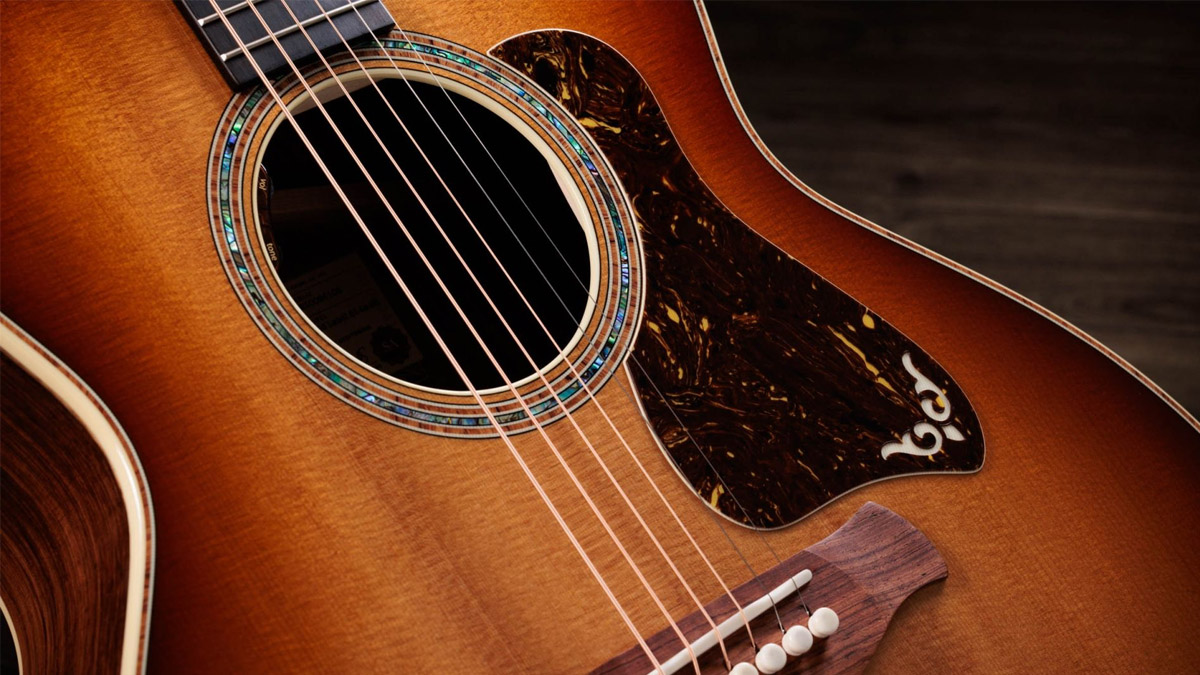Guitar World Verdict
In the final analysis, while the odd corner has clearly been cut, remember these are true Gibsons with all the individuality that this brand exhibits, arguably over all others. They’ve definitely fulfilled their ‘good guitar on a budget’ remit and, although we weren’t so sure at first, it looks like we might just have made a couple of new best friends.
Pros
- +
Well set up straight out of the box.
- +
J-45 is a versatile all-rounder with strong tonal projection.
- +
Remarkable value for money.
- +
Perfect gigging guitars.
Cons
- -
Shame about the plastic fingerboard inlays but understandable given the cost considerations.
- -
Sunburst colours could be less garish.
- -
J-45 aficionados may miss the fuller tone that the deeper-bodied model provides.
You can trust Guitar World
What is it?
It’s nothing new for Gibson to release budget-friendly versions of its mainline models. Just look at the J-100 – a leaner, meaner take on the original Gibson super-jumbo that reveals the concept in action as far back as 1939.
Perhaps we’re more familiar with those ’50s and ’60s stalwarts the Les Paul and SG Junior, each one a perfect example of how to execute the strategy brilliantly.
But let’s also not forget the less than stellar ES-325, The Paul and SG-100 from the inauspicious ’70s, or the now-collectible Depression-era Recording King and Kalamazoo brands that the company produced. We could go on, but you get the picture.
To this celebrated and not-so-celebrated roster we can now add the J-45 and Hummingbird Specials, pocket-conscious versions of two of Gibson’s most lauded acoustic guitars. The range also includes the parlour sized L-00, but it’s the former pair we’re looking at today.
Following Gibson’s tried-and-trusted formula, while the timbers used may not be the absolute pick of the crop such as you’d find on Custom Shop models, they are all solid with both instruments’ backs and sides hewn from genuine mahogany, and with tops of Sitka spruce with scalloped spruce X-bracing.
A new wood to us, though, is utile, also known as sipo, which is used for the necks of both Hummingbird and J-45 Special. The Wood Database informs us utile is a West African timber that sits in the broader mahogany family and shares similar working characteristics.
Coming from the Latin word utilis, meaning useful, perhaps we’ll be seeing more of it on guitars as genuine mahogany becomes scarcer.
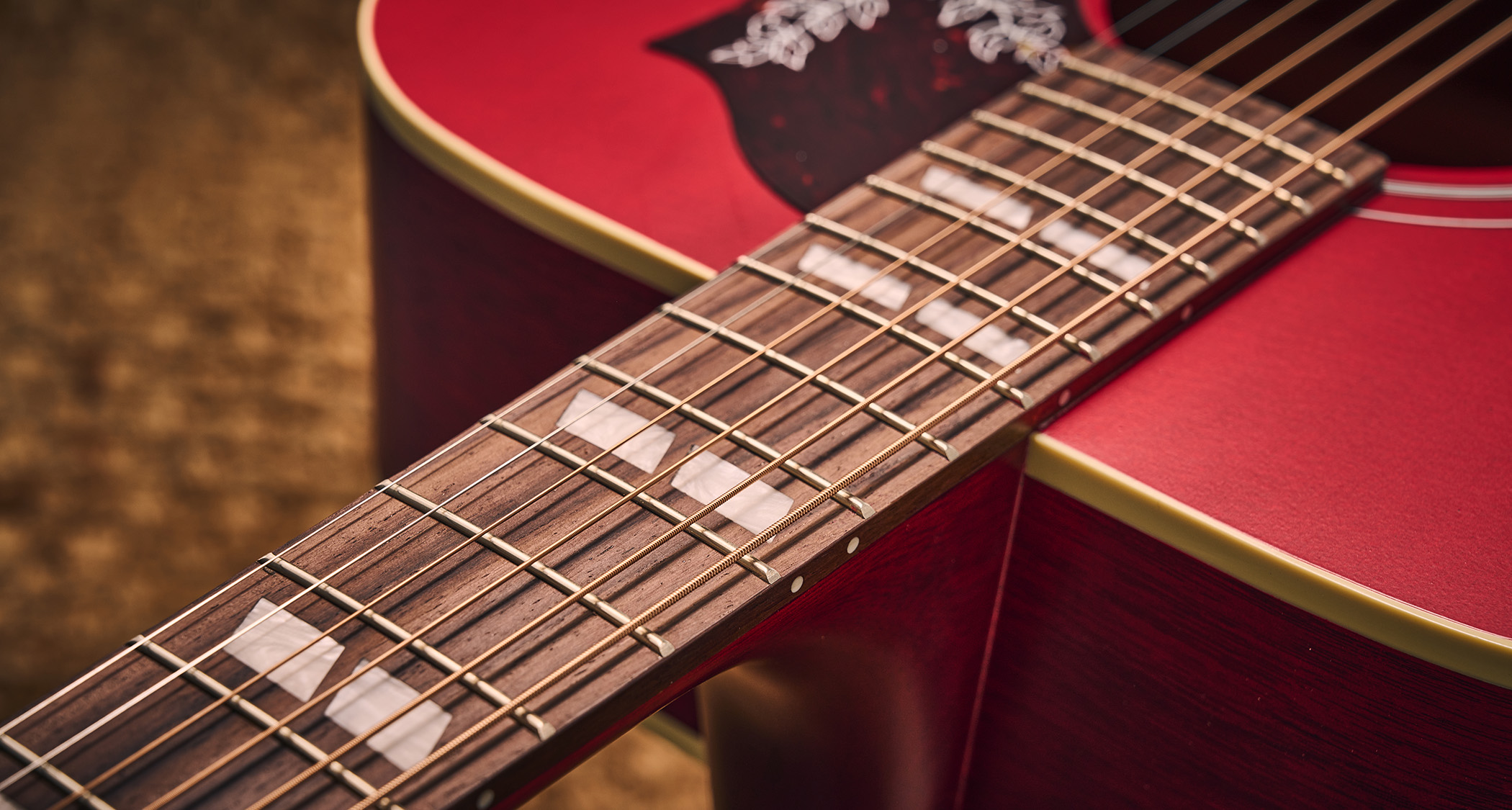
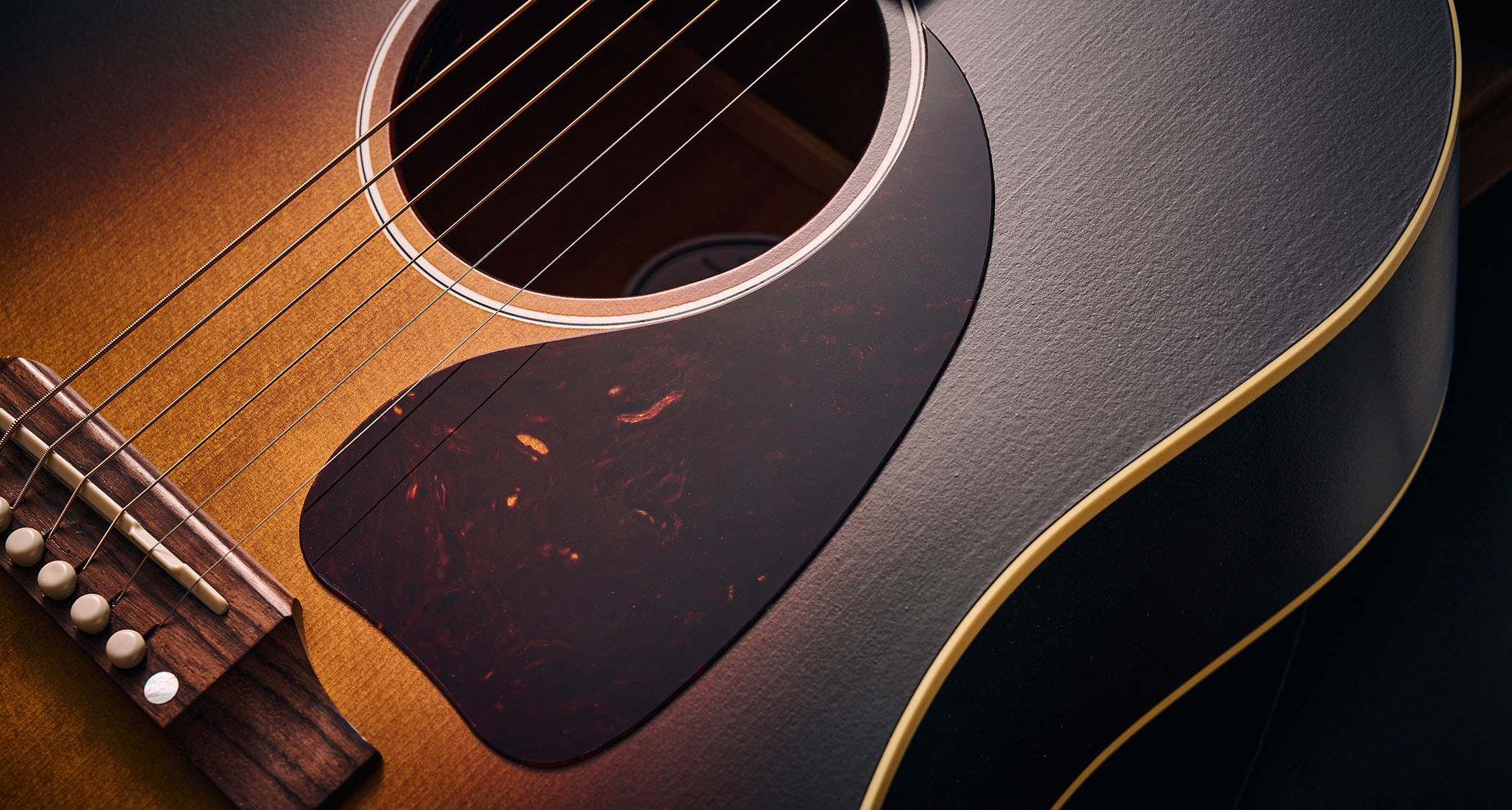
Fretboards remain 304.8mm (12-inch) radius Indian rosewood, not laurel or pau ferro as we’ve often seen elsewhere, and both bear 20 standard frets. The Hummingbird’s fingerboard, although usually bound in white plastic, is left bereft here, which is normal on the J-45, of course.
But while this guitar can boast real pearl dots, the Hummingbird is given celluloid parallelograms (they’re proper shell on mainline and Custom Shop instruments). This is a bit of a shame, since mother-of-pearl is a charming feature on full-fat Hummingbirds and other great Gibbos. But it would up the price considerably, so we appreciate Gibson’s motives here.
One thing of note is that both of these acoustics sport slightly shallower depth bodies than their regular counterparts. Gibson calls this ‘concert depth’. It’s not much, only 19mm give or take, down from 125mm (4.92 inches) to 106mm (4.2 inches), but sound-wise the company says it tightens up the bottom-end, making it leaner but without turning the sound thin or shrill.
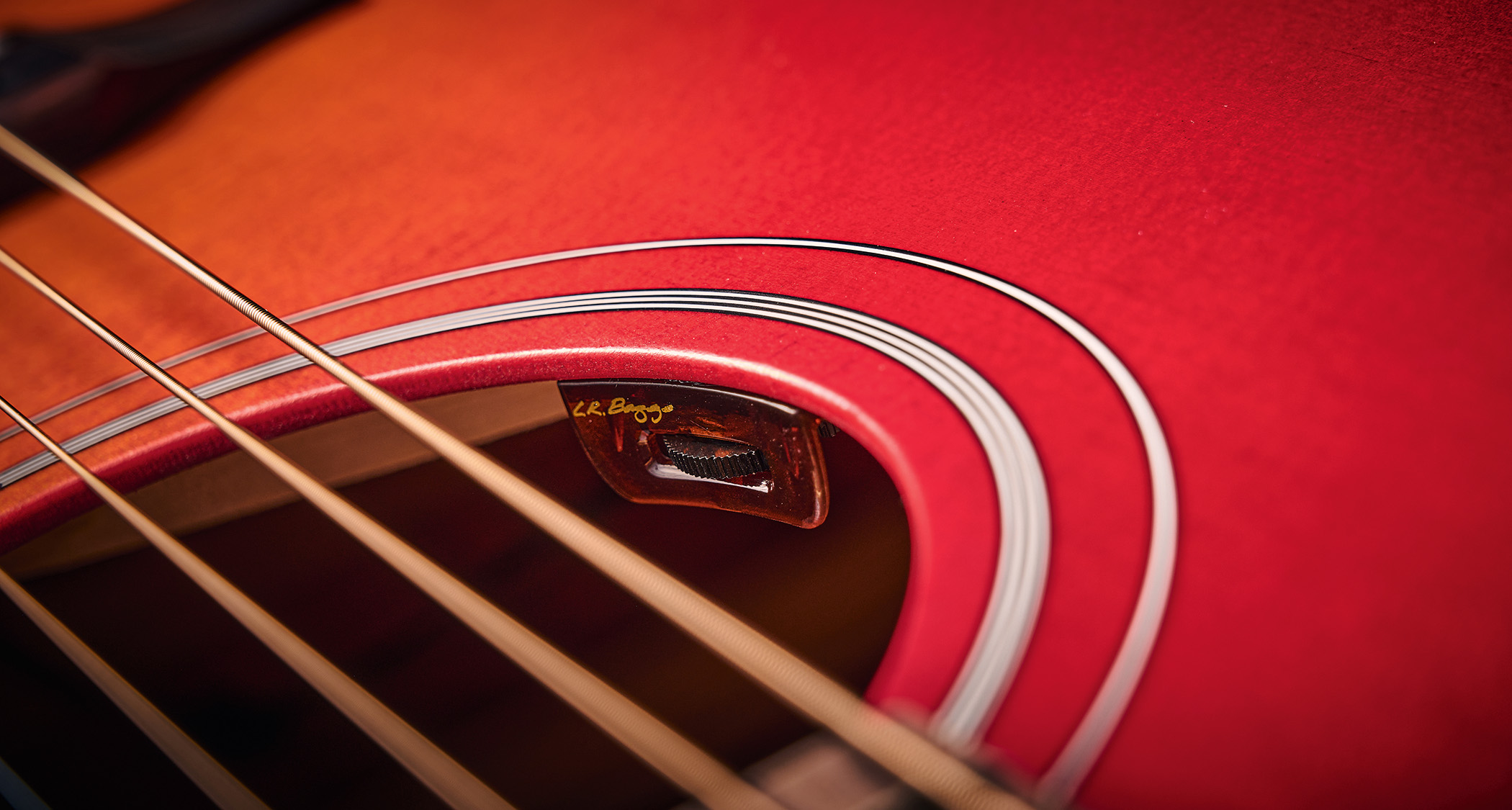
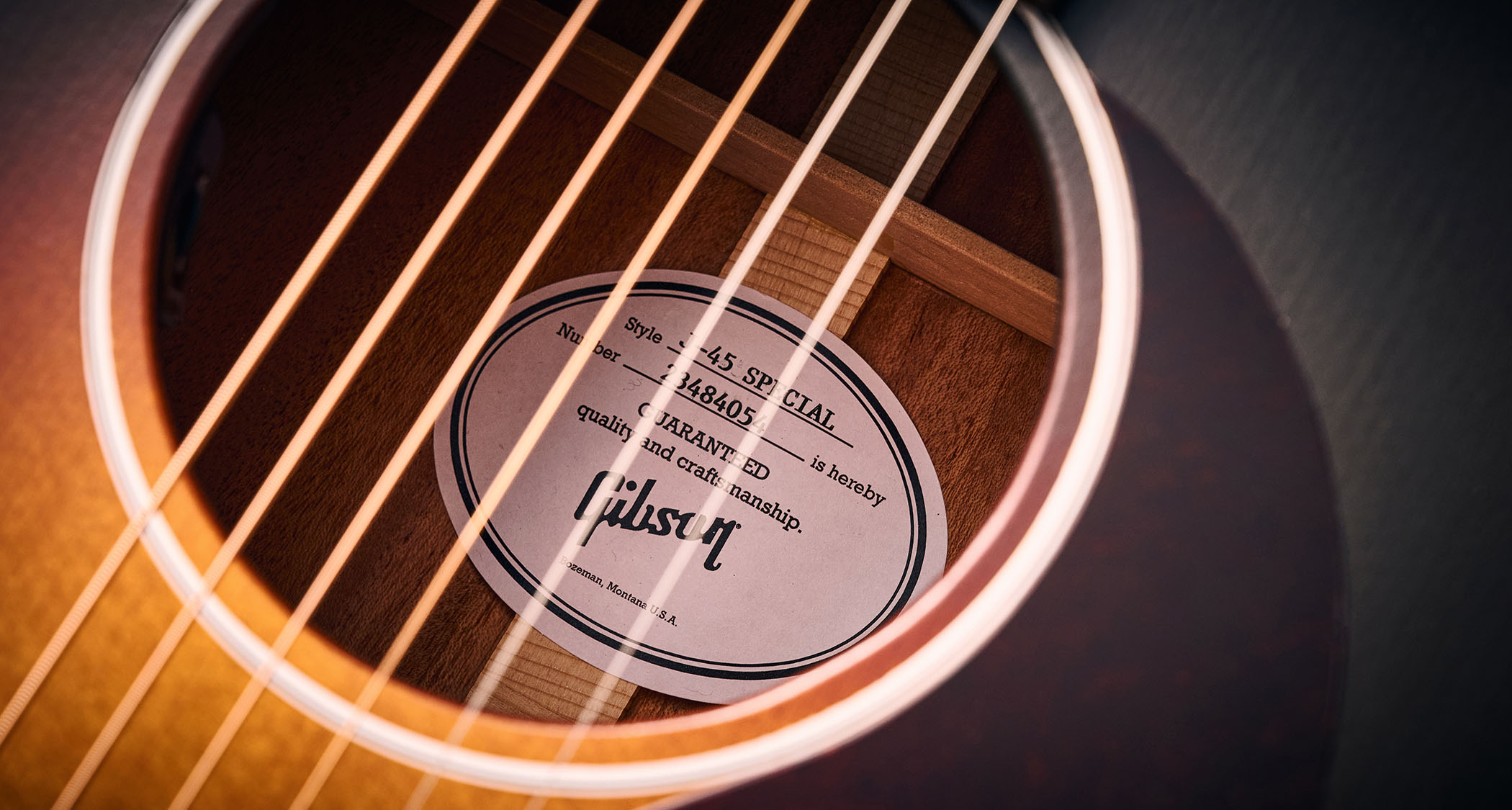
Naturally, our J-45 follows its 1942 forebear’s round-shouldered look, while the Hummingbird has the model’s usual squared-off top bout, the first Gibson acoustic to do so when released in 1960.
Both guitars come with the traditional ‘belly up’ rosewood bridge and intonation compensated Tusq saddles, nickel-plated Grover Rotomatic tuners, Tusq nut, plus the excellent LR Baggs Element Bronze undersaddle pickup with soundhole volume control.
The fact that they’re cheaper by Gibson standards and come stage-ready means you needn’t worry too much about the odd ding or dent while the guitars are out there earning their keep
Finish-wise, our Gibsons come in traditional nitrocellulose lacquer, albeit ‘thin skin’ satin. And while there’s something very cool about this workaday approach on the J-45’s classic ‘tobacco sunburst’, the Hummingbird Special’s red-to-yellow shading really is rather garish.
It’s the only thing that looks a bit cheap here and is the very aspect that doesn’t need to be, since it would be so simple for Gibson to tone it down a shade or two to create a far classier impression.
The two guitars’ necks are attached to their bodies with a classic compound dovetail joint using hide glue. This means they can be easily removed should resetting or other work be required further down the line.
All in all, they are built well and look tidy inside and out. The fact that they’re cheaper by Gibson standards and come stage-ready means you needn’t worry too much about the odd ding or dent while the guitars are out there earning their keep.
Specs
Gibson J-45 Special
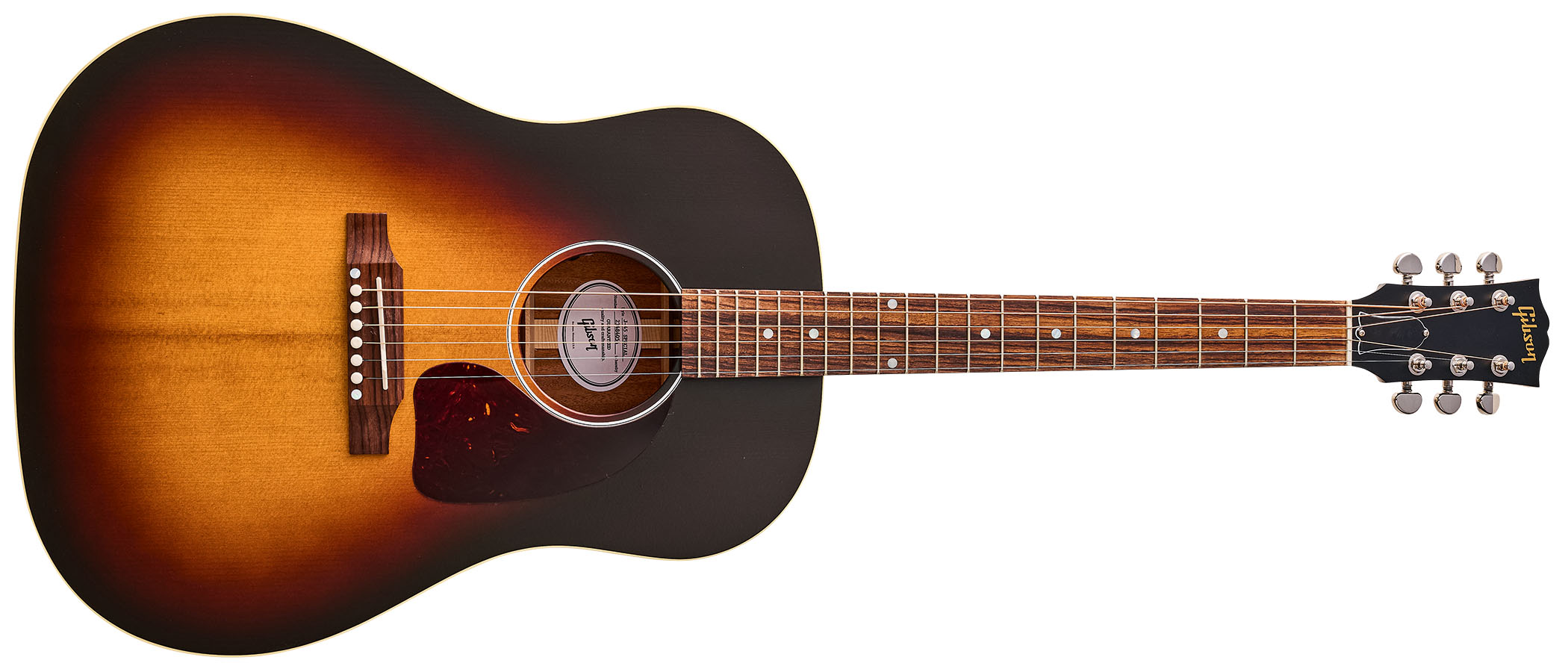
- PRICE: $1,999/£1,699 (inc gigbag)
- ORIGIN: USA
- TYPE: Round-shouldered steel-string flat-top acoustic with pickup
- TOP: Solid Sitka spruce
- BACK/SIDES: Solid mahogany
- MAX RIM DEPTH: 106mm
- MAX BODY WIDTH: 406mm
- NECK: Utile, SlimTaper profile
- SCALE LENGTH: 629mm (24.75”)
- TUNERS: Grover Rotomatic – nickel‑plated
- NUT/WIDTH: Graph Tech Tusq/ 43.82mm
- FINGERBOARD: Indian rosewood with pearl dot inlays
- FRETS: 20, medium
- BRIDGE/SPACING: Rosewood ‘belly-up’ style with compensated Tusq saddle/54mm
- ELECTRICS: LR Baggs Element Bronze with soundhole volume control
- WEIGHT (kg/lb): 2.077/4.58
- OPTIONS: None
- RANGE OPTIONS: The mahogany/spruce L-00 Special (£1,699) is the smaller-bodied parlour style model which also comes with the LR Baggs Element Bronze pickup
- LEFT-HANDERS: N/A
- FINISHES: Satin Vintage Sunburst (as reviewed), Satin Wine Red – ‘thin skin’ nitrocellulose
- CONTACT: Gibson
Gibson Hummingbird Special
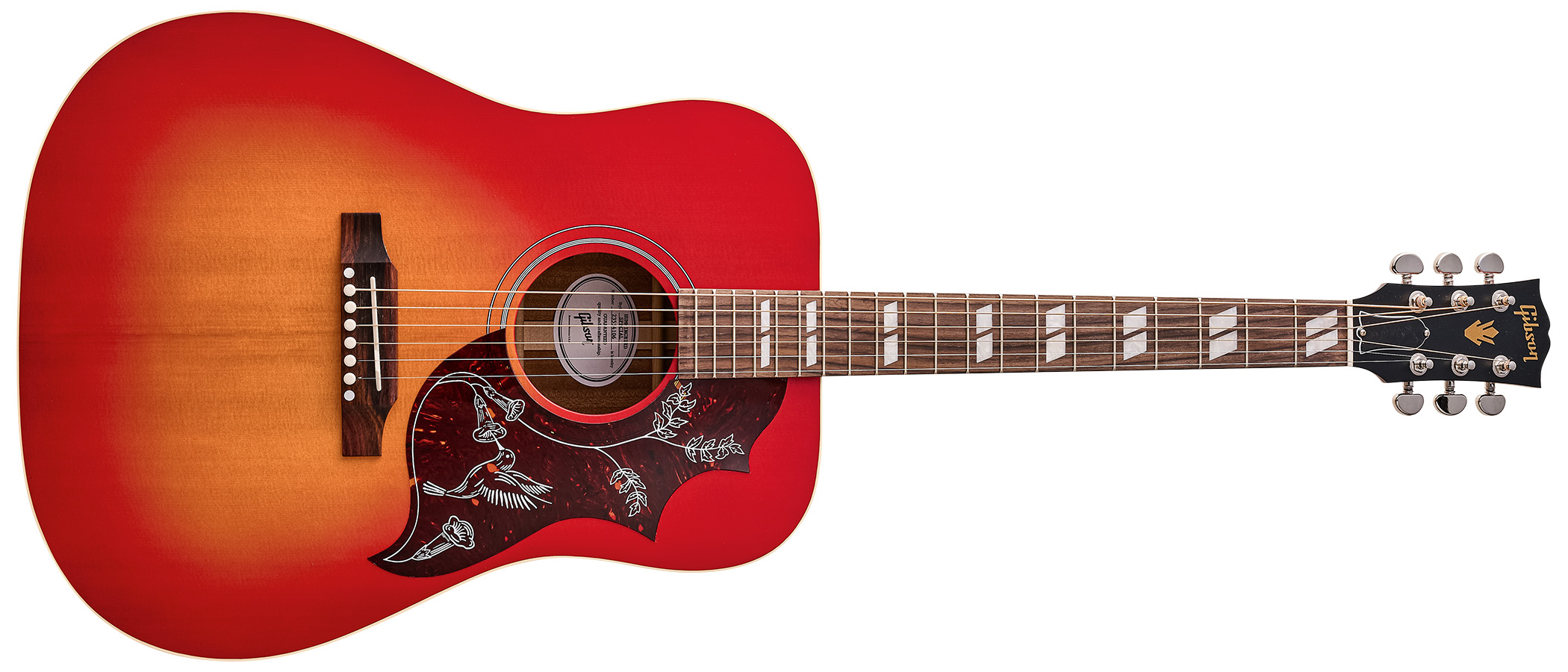
PRICE: $2,199/£1,899 (inc gigbag)
ORIGIN: USA
TYPE: Square-shouldered steel-string flat-top acoustic with pickup
TOP: Solid Sitka spruce
BACK/SIDES: Solid mahogany
MAX RIM DEPTH: 106mm
MAX BODY WIDTH: 406mm
NECK: Utile, SlimTaper profile
SCALE LENGTH: 629mm (24.75”)
TUNERS: Grover Rotomatic – nickel‑plated
NUT/WIDTH: Graph Tech Tusq/ 43.82mm
FINGERBOARD: Indian rosewood with pearloid split parallelogram inlays
FRETS: 20, medium
BRIDGE/SPACING: Rosewood ‘belly-up’ style with compensated Tusq saddle/54mm
ELECTRICS: LR Baggs Element Bronze with soundhole volume and tone controls
WEIGHT (kg/lb): 2.22/4.89
OPTIONS: None
RANGE OPTIONS: See J-45 Special
LEFT-HANDERS: N/A
FINISHES: Satin Vintage Cherry Sunburst (as reviewed), Satin Wine Red – ‘thin skin’ nitrocellulose
Playability and sounds
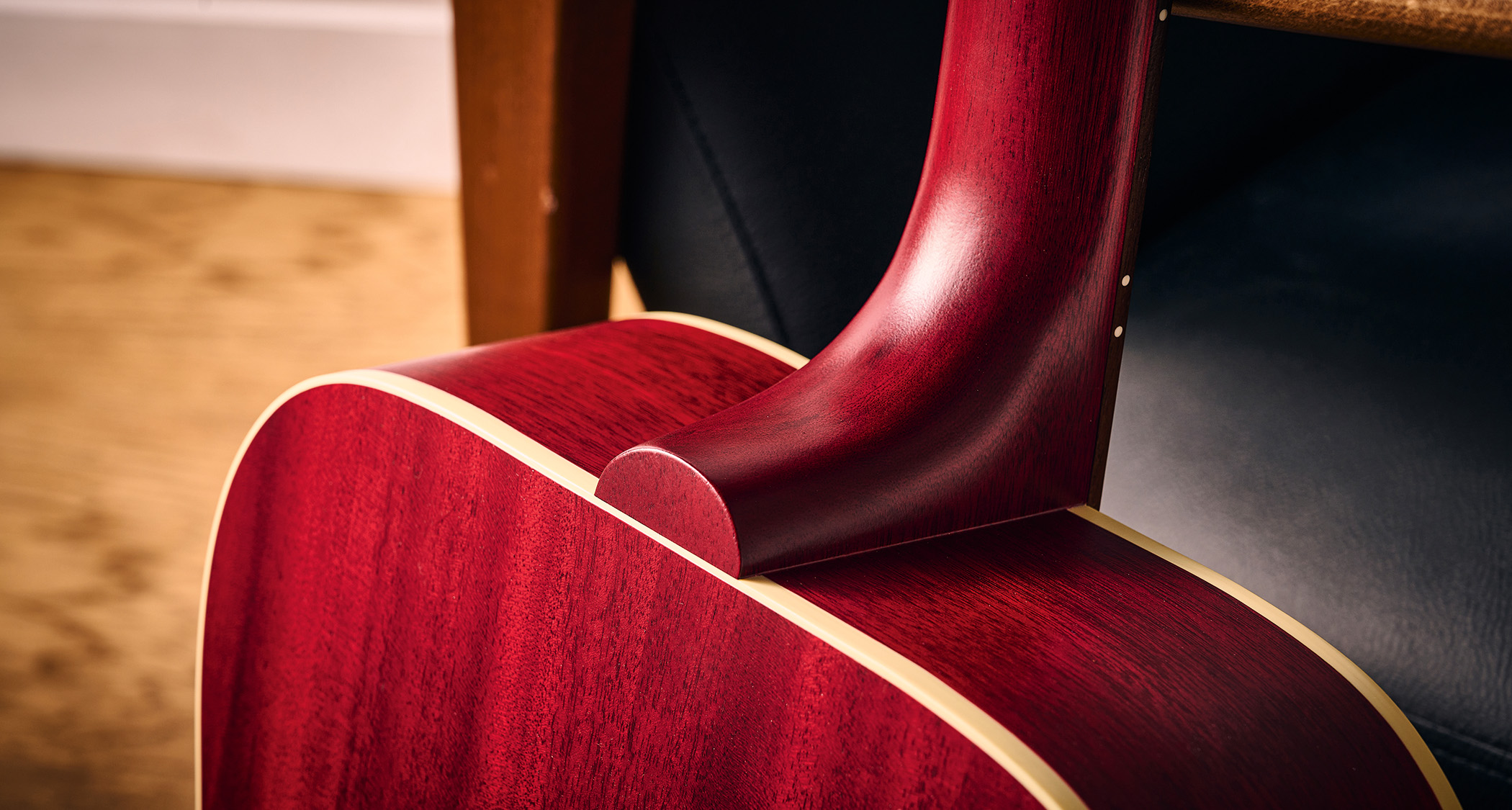
While this writer was talking to a legendary UK luthier at the recent Birmingham Guitar Show, he agreed that Gibson acoustics have always had a wonderfully earthy and organic sound, and continue to have their own voice despite alterations to bracing pattern, build changes and other factors.
Today’s bracing is tighter and less splayed than on vintage examples, providing a more focused midrange compared with older instruments, which usually sound bassier. So will our slightly more svelte duo display even more of this lightness and possibly project a bit more? Before we find out, let’s see how they feel.
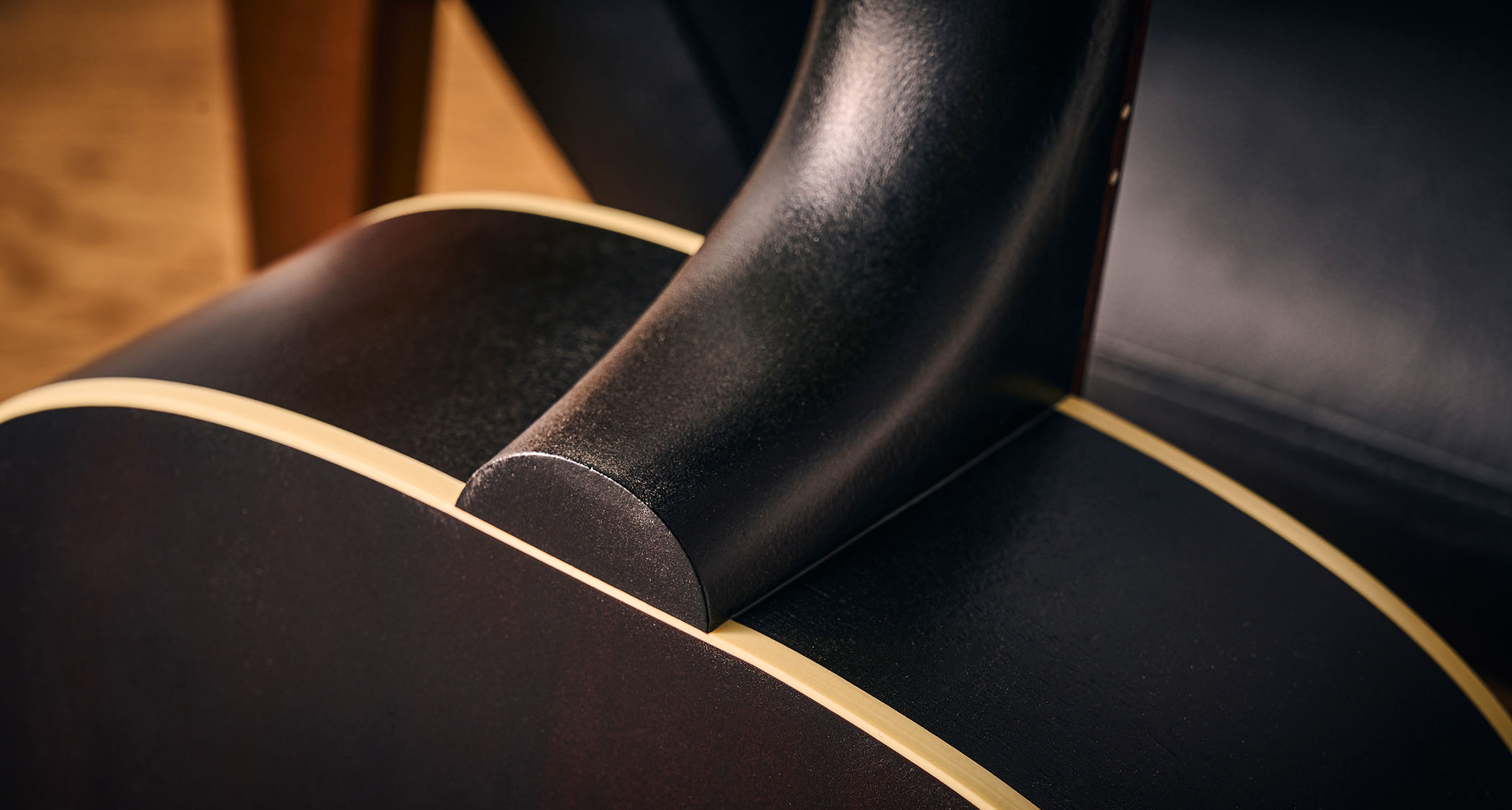
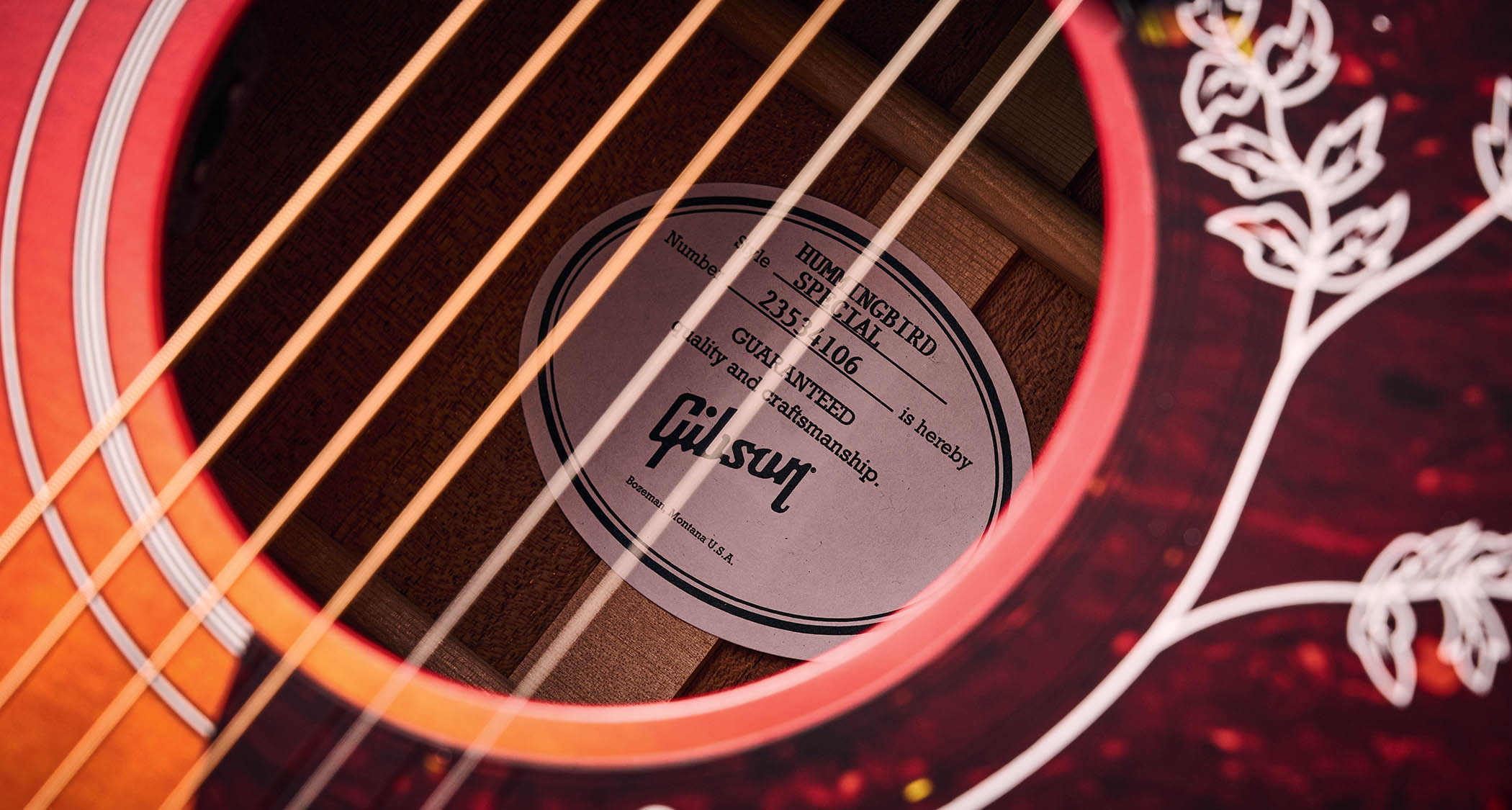
Other than the fact that they look totally different – one a dark sunburst acoustic with sloping shoulders and the other toting a square-topped body and blingier inlays – there’s a whole lot in common here.
The woods, hardware, electrics and so on are identical, but it’s in the necks and therefore each model’s playability where the differences lie.
While the J-45 Special’s neck is Gibson’s much-loved SlimTaper profile, measuring around 22mm in depth at the 1st fret and 24mm at the 10th, the Hummingbird has a round profile with 23mm and 25mm measurements respectively.
Nut widths are identical and at 43.82mm (1.725 inches) are wide enough for fingerstyle but not so stretchy as to put off the strummers, something at which both our guitars traditionally excel.
In the hand the J-45 feels the more modern of the two due to its gentle C-shaped carve, the Hummingbird’s having a little more meat on the shoulders. It feels very close to this writer’s own Custom Shop Hummingbird that’s used regularly on theatre shows, is a breeze to play and never becomes tiring.
The good news is that both instruments came out of their soft-shell guitar cases perfectly set up and welcoming to play.
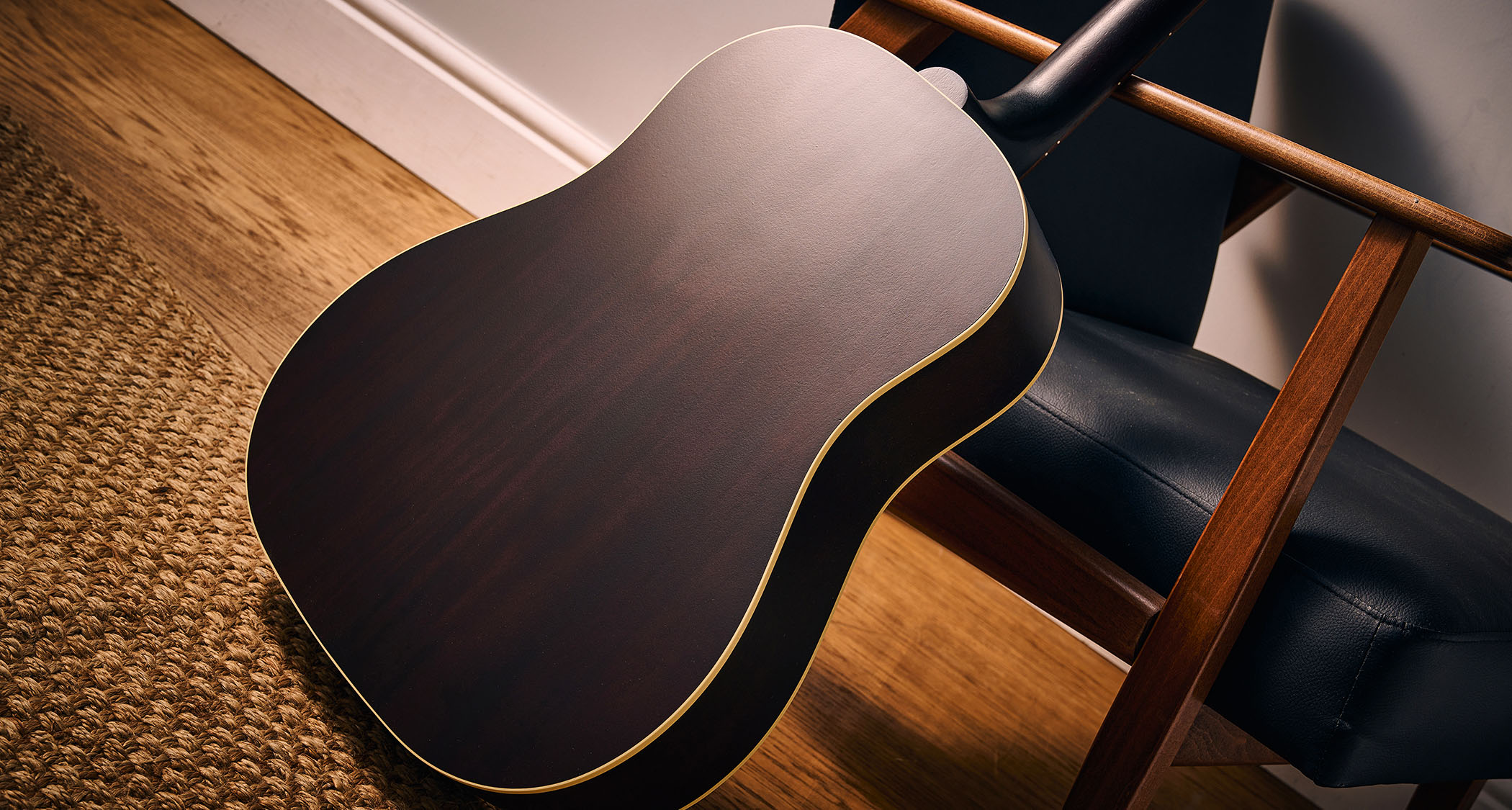
And there’s no doubting that they have that signature Gibson tone. We’d actually been playing the guitars for a good 30 minutes before the penny dropped that they were a smidge shallower. It makes them a little more comfortable while seated and noticeably more so when playing standing up.
LR Baggs’ Element Bronze is a fine piece of kit: it’s simple to use, has a beautiful flat tone that sound engineers love, and is unlikely to cause feedback issues.
We’d agree, too, that there’s a tad more focus in the tones, especially that of the J-45, which perhaps provides the fingerpicking element that some say Gibson’s don’t have (tell James Taylor, John Renbourn, Jimmy Page and Bob Dylan that!).
They do sound a good deal different from each other, too. Who knows how much influence the square or round shoulders have on the tone? But the Hummingbird is definitely the fatter and warmer of the two, making it a brilliant strummer, while the J-45 is possibly the better all-rounder as it responds well to picking, too. As usual, these things are subjective so you’ll have to try them for yourself.
LR Baggs’ Element Bronze is a fine piece of kit: it’s simple to use, has a beautiful flat tone that sound engineers love, and is unlikely to cause feedback issues.
Verdict
Verdict: ★★★★
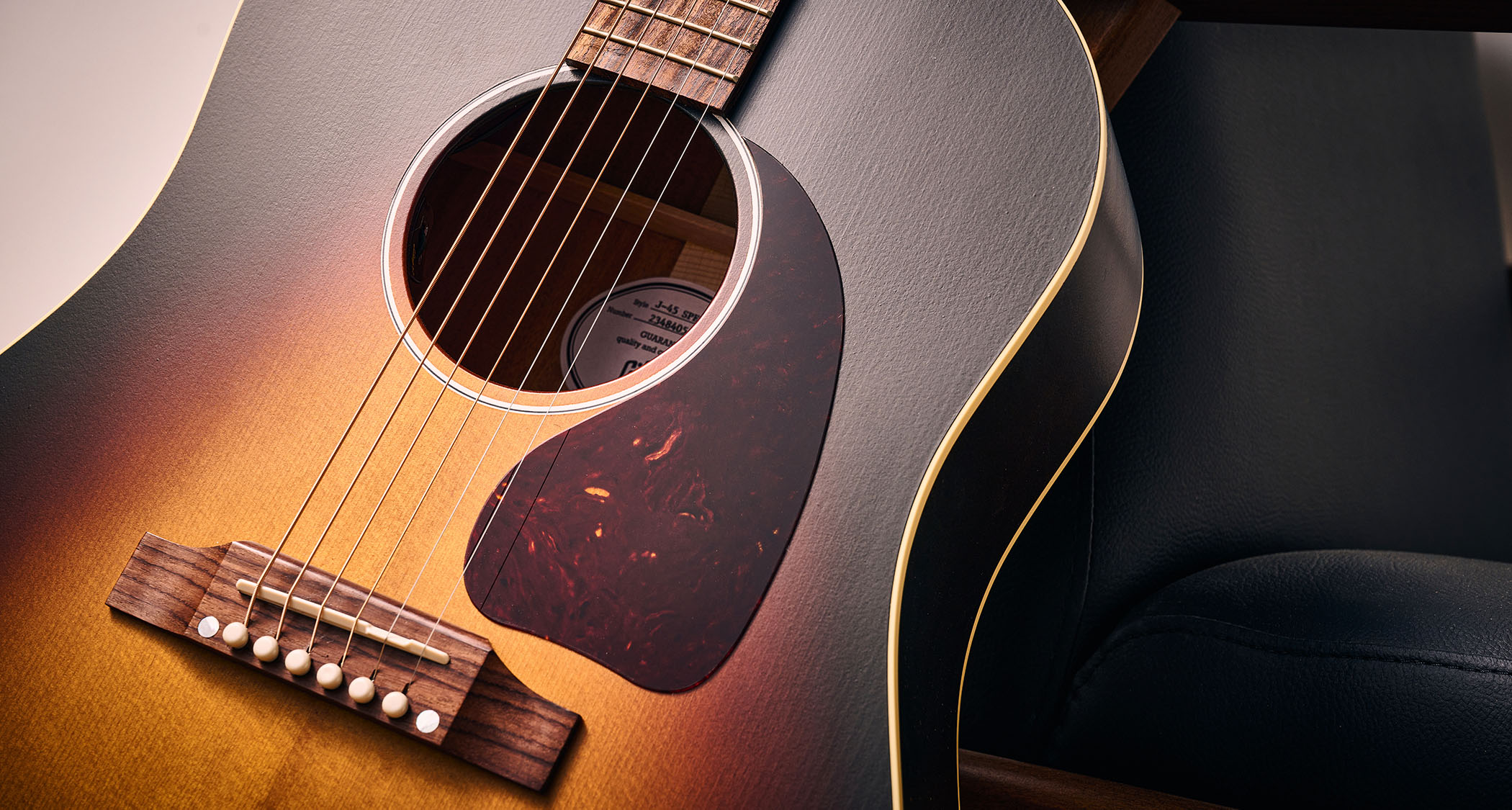
It can be tricky evaluating a brand’s more cost-conscious guitars when you’re used to playing the top-end stuff. For example, the Standard versions of our two models street at about a grand more; Custom Shop beauties come in at almost three times the price.
It’s after sitting and playing them for a while when each guitar’s character emerges and it all begins to make sense
So let’s applaud Gibson for getting USA-made instruments down to this price point while making them fun to play and providing both with real musical personality. It’s after sitting and playing them for a while when each guitar’s character emerges and it all begins to make sense.
The Hummingbird’s fatter neck is in no way a hindrance. In fact, a chunkier profile can often prove less tiring than a skinny stick of a thing.
So we enjoyed its more old-school feel and even wondered if the bigger neck and that little bit more air in the body due to those broader shoulders might be providing the extra warmth it definitely exhibits. It’s certainly the more mellifluous toned, which makes it seem the better of the two straight out of the box.
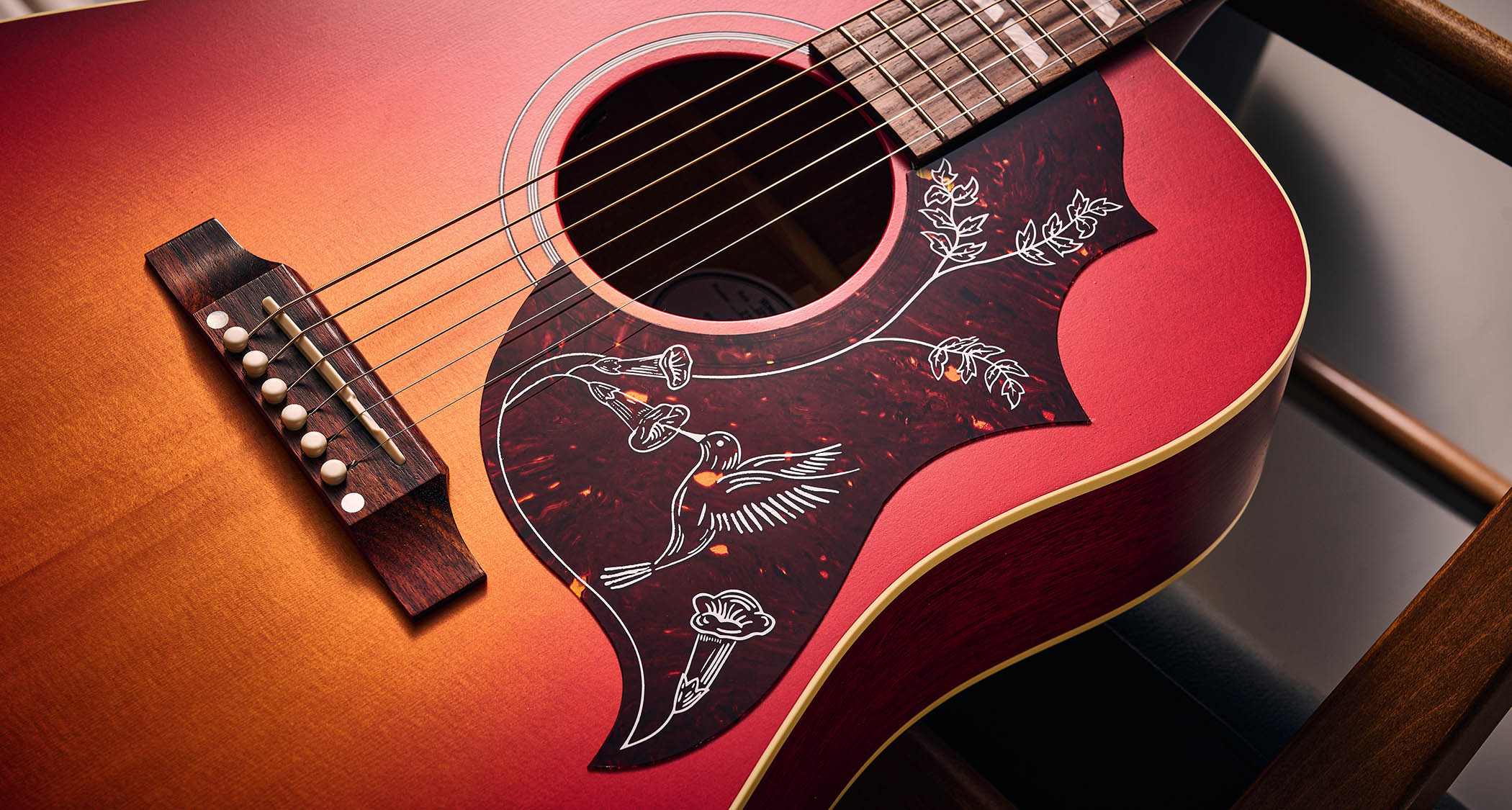
However, our J-45 Special, while initially having the less impressive voice, comes into its own once you give it a chance to speak.
You’ll soon discover it enjoys fingerstyle and seems to project more like an OM or 000-size body. Its more slender neck profile, with a little less meat on the shoulders, also means guitar capos are easy to fit and fingerstyle jaunts further up the frets feel unencumbered.
We’ve said it before, but while all acoustic guitars will do all things, some will definitely do certain stuff that little bit better. So were we needing a great strummer, we’d pick up the Hummingbird, and for a good all-rounder, it would be the J-45.
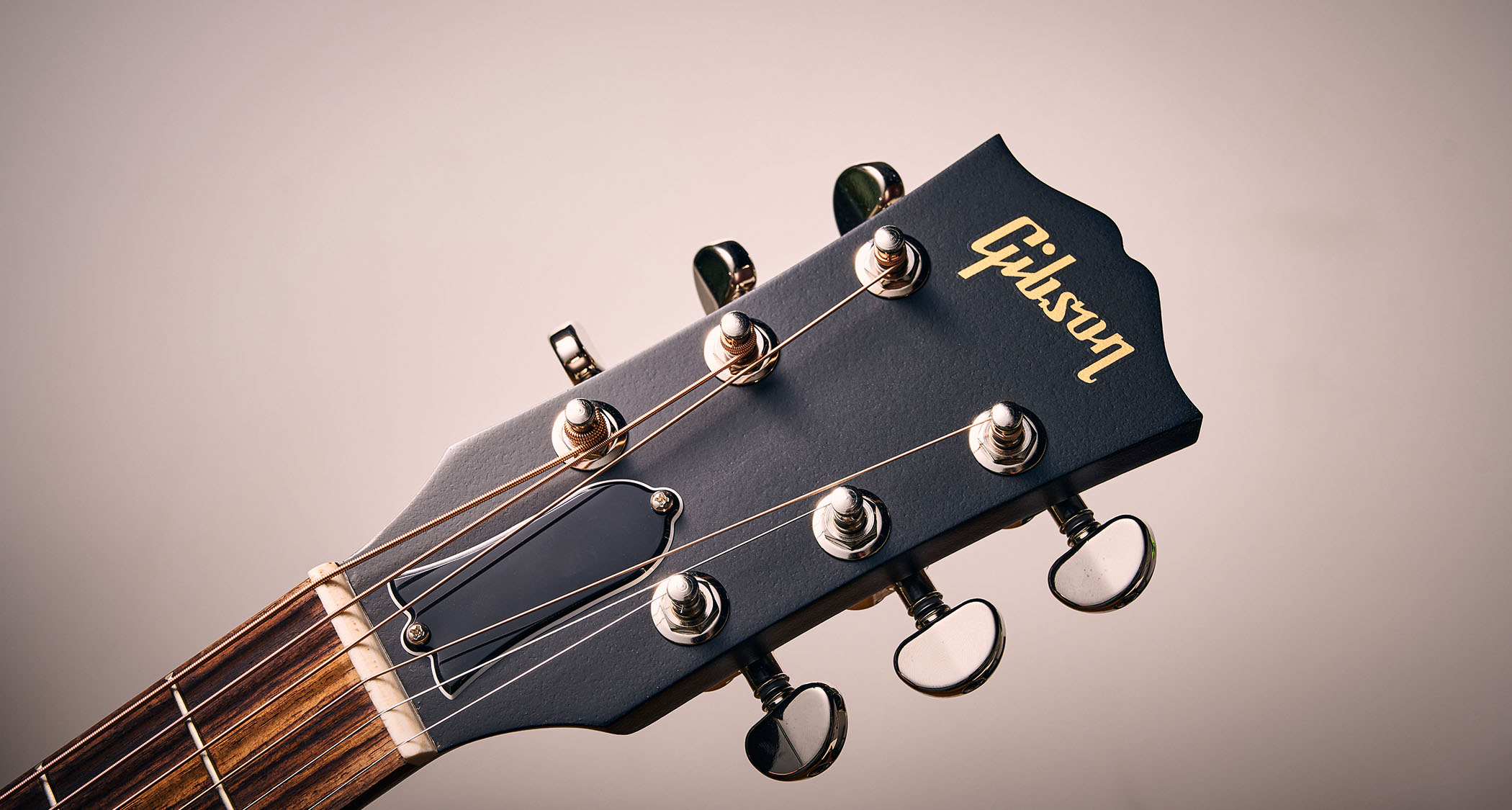
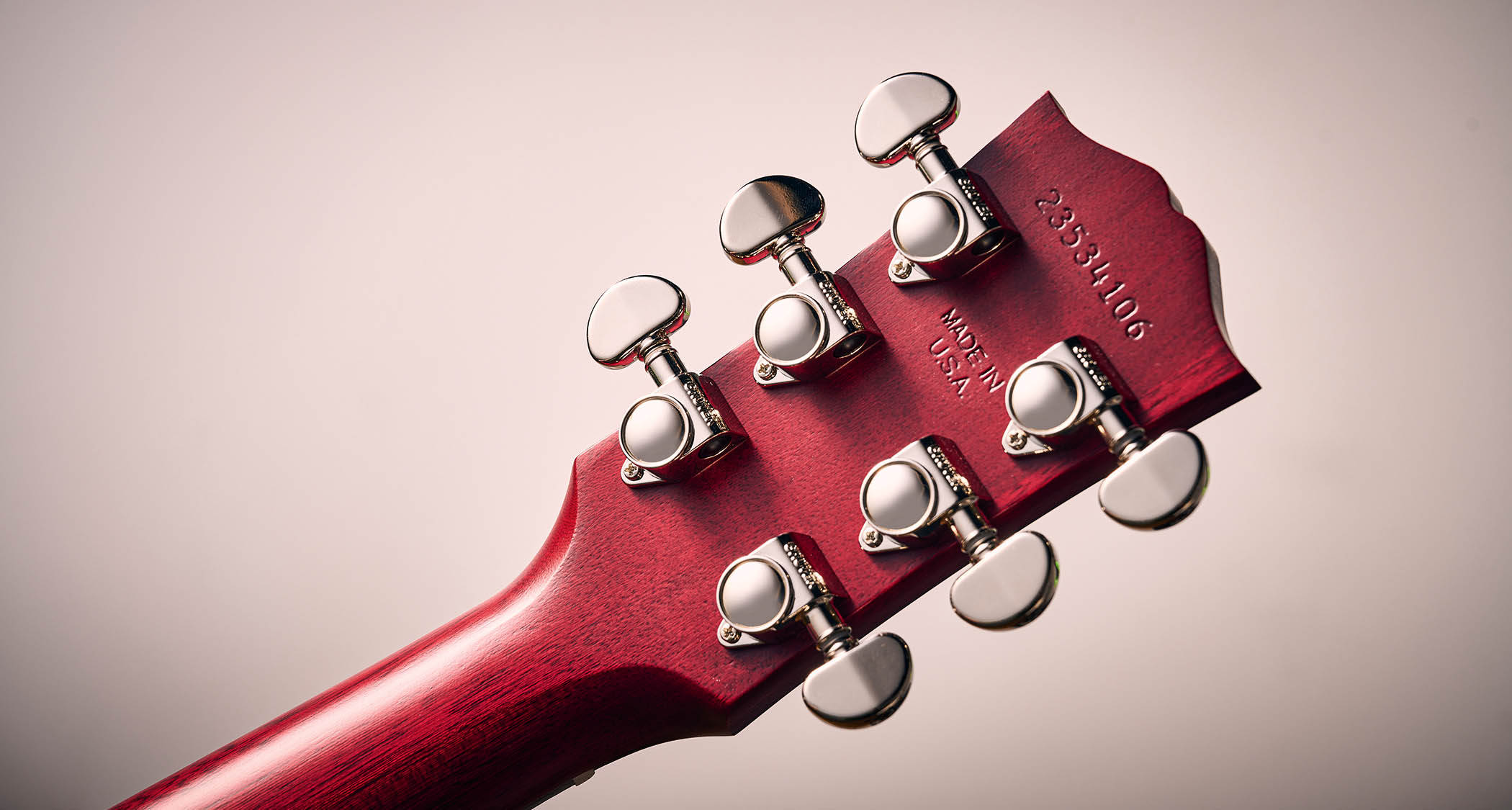
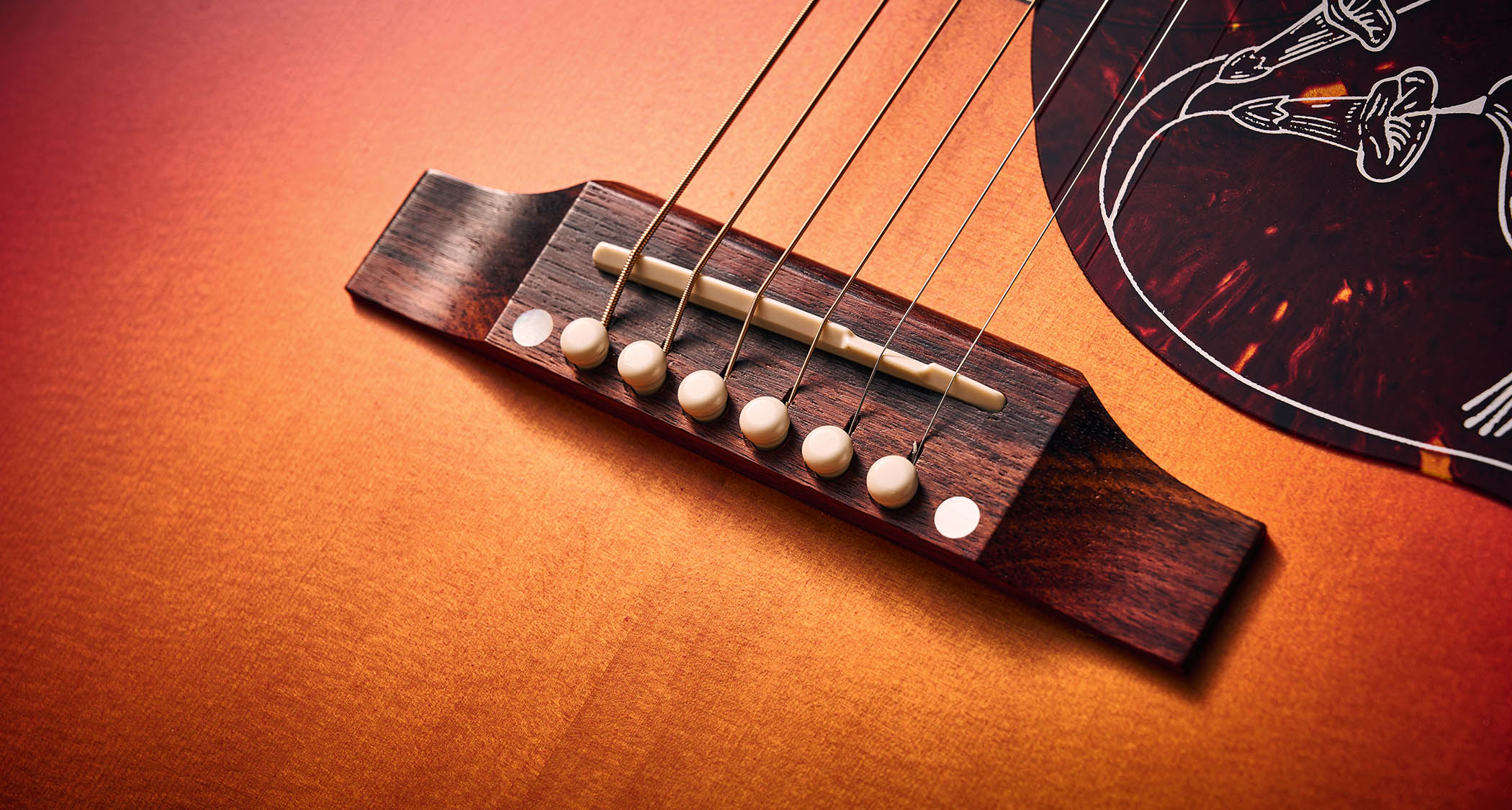
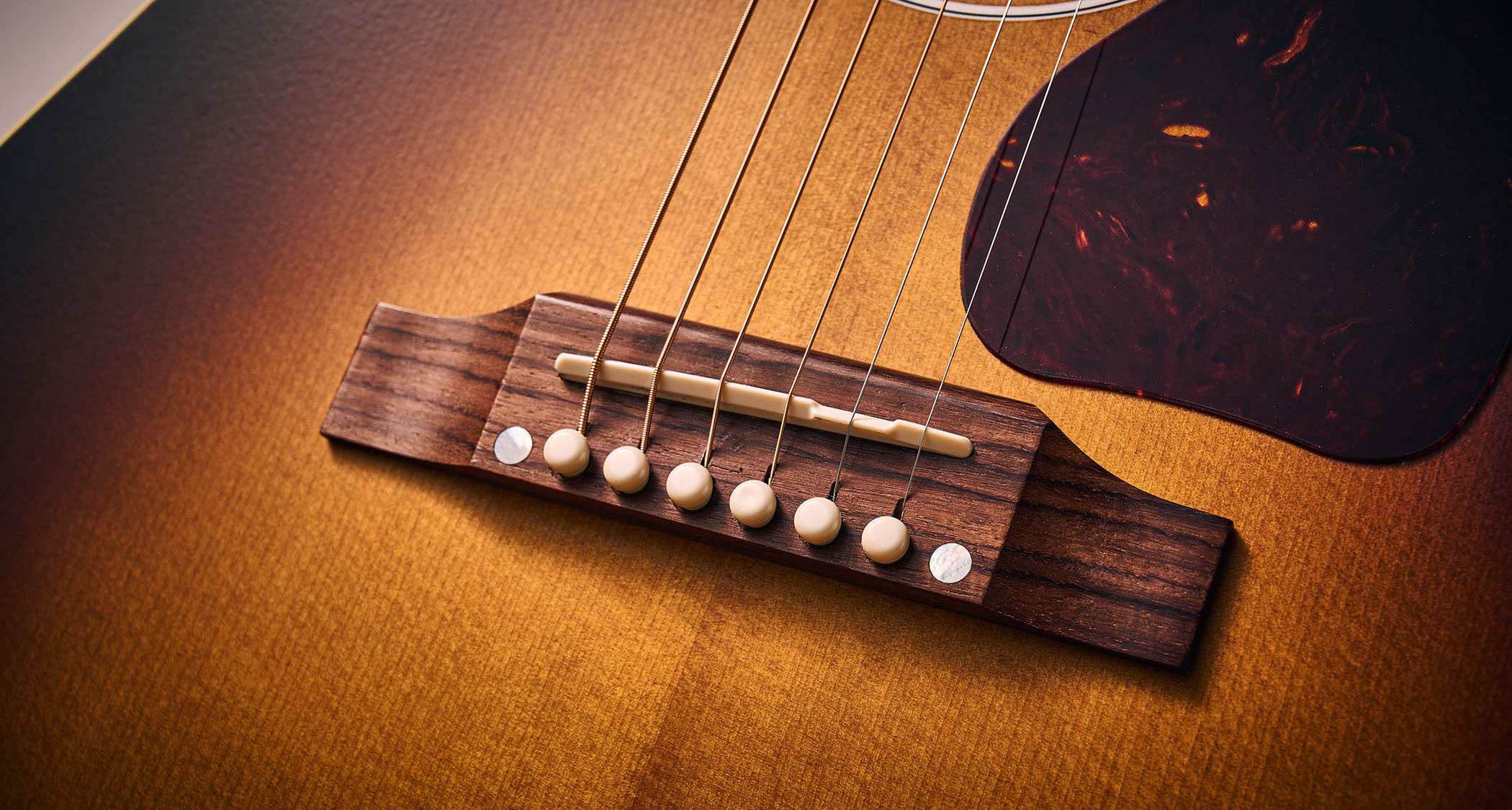
Guitar World verdict: In the final analysis, while the odd corner has clearly been cut, remember these are true Gibsons with all the individuality that this brand exhibits, arguably over all others. They’ve definitely fulfilled their ‘good guitar on a budget’ remit and, although we weren’t so sure at first, it looks like we might just have made a couple of new best friends.
Hands-on videos
Guitarist
Gibson
Guitar Center
In the late '70s and early '80s Neville worked for Selmer/Norlin as one of Gibson's UK guitar repairers, before joining CBS/Fender in the same role. He then moved to the fledgling Guitarist magazine as staff writer, rising to editor in 1986. He remained editor for 14 years before launching and editing Guitar Techniques magazine. Although now semi-retired he still works for both magazines. Neville has been a member of Marty Wilde's 'Wildcats' since 1983, and recorded his own album, The Blues Headlines, in 2019.
You must confirm your public display name before commenting
Please logout and then login again, you will then be prompted to enter your display name.
“Fender has stripped back the price – but has it gone too far paring back the sounds, too?” Fender Standard Acoustasonic Telecaster review
“This isn’t just a makeover. It’s a full-on glow-up”: Martin’s Junior Series Dreadnought is the best all-round acoustic electric guitar on the market – now the entire range has been given its most significant upgrade yet
